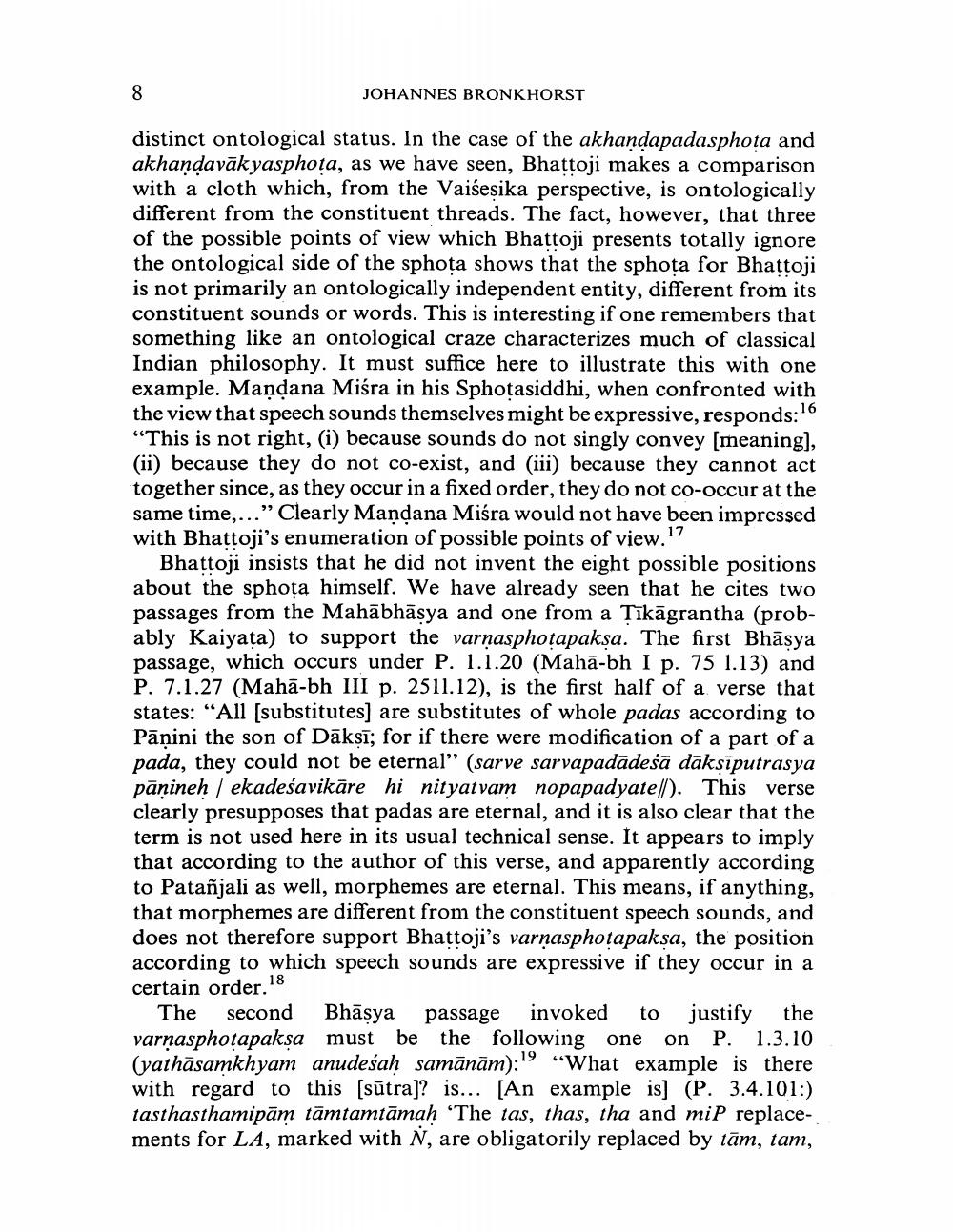Book Title: Bhattoji Diksita On Sphota Author(s): Johannes Bronkhorst Publisher: Johannes Bronkhorst View full book textPage 6
________________ JOHANNES BRONKHORST distinct ontological status. In the case of the akhandapadasphota and akhandavākyasphota, as we have seen, Bhattoji makes a comparison with a cloth which, from the Vaišesika perspective, is ontologically different from the constituent threads. The fact, however, that three of the possible points of view which Bhattoji presents totally ignore the ontological side of the sphota shows that the sphota for Bhattoji is not primarily an ontologically independent entity, different from its constituent sounds or words. This is interesting if one remembers that something like an ontological craze characterizes much of classical Indian philosophy. It must suffice here to illustrate this with one example. Mandana Miśra in his Sphotasiddhi, when confronted with the view that speech sounds themselves might be expressive, responds:16 “This is not right, (i) because sounds do not singly convey (meaning), (ii) because they do not co-exist, and (iii) because they cannot act together since, as they occur in a fixed order, they do not co-occur at the same time,...” Clearly Mandana Miśra would not have been impressed with Bhattoji's enumeration of possible points of view.17 Bhattoji insists that he did not invent the eight possible positions about the sphota himself. We have already seen that he cites two passages from the Mahābhāsya and one from a Tīkāgrantha (probably Kaiyata) to support the varnasphotapaksa. The first Bhāsya passage, which occurs under P. 1.1.20 (Mahā-bh I p. 75 1.13) and P. 7.1.27 (Mahā-bh III p. 2511.12), is the first half of a verse that states: "All (substitutes] are substitutes of whole padas according to Pāṇini the son of Dāksī; for if there were modification of a part of a pada, they could not be eternal" (sarve sarvapadādeśā dāksīputrasya pāņineh / ekadeśavikāre hi nityatvam nopapadyatell). This verse clearly presupposes that padas are eternal, and it is also clear that the term is not used here in its usual technical sense. It appears to imply that according to the author of this verse, and apparently according to Patañjali as well, morphemes are eternal. This means, if anything, that morphemes are different from the constituent speech sounds, and does not therefore support Bhattoji's varnasphotapaksa, the position according to which speech sounds are expressive if they occur in a certain order. 18 The second Bhāsya passage invoked to justify the varnasphotapaksa must be the following one on P. 1.3.10 (yathāsamkhyam anudesah samānām):19 "What example is there with regard to this [sūtra)? is... [An example is] (P. 3.4.101:) tasthasthamipām tāmtamtāmah ‘The tas, thas, tha and mip replacements for LA, marked with N, are obligatorily replaced by tām, tam,Page Navigation
1 ... 4 5 6 7 8 9 10 11 12 13 14 15 16 17 18 19 20 21 22 23 24 25 26 27 28 29 30 31 32 33 34 35 36 37 38 39
